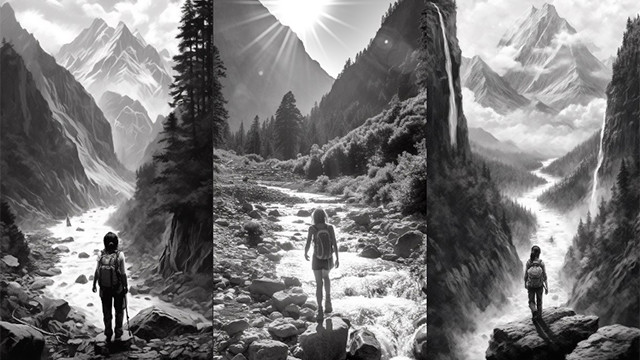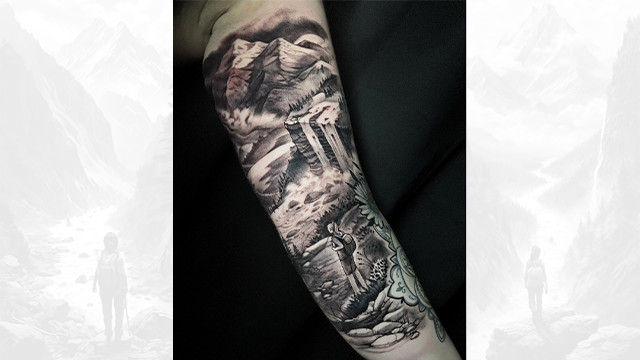The world of tattooing, an age-old craft steeped in tradition and personal expression, is beginning to feel the transformative touch of artificial intelligence (AI). My own recent experience getting a new tattoo opened my eyes to this evolving landscape. During a winter break trip to Florida, a conversation with my tattoo artist about AI ethics led to a surprising revelation: a significant portion of my new tattoo design had been conceived with the help of AI.
The Integration of AI in Tattoo Creation
Like many creative fields, the tattoo industry is witnessing the growing influence of AI. Generative AI tools are being adopted by artists to accelerate and refine the design phase, drastically reducing the time spent on initial concept development.
My artist shared how AI has become an invaluable tool for him, particularly in speeding up the creation of stencils. Tasks that previously consumed hours can now be accomplished much faster, allowing him to dedicate more time to the actual tattooing process. Crucially, he emphasized that AI-generated designs serve as a starting point, not the final product. He consistently modifies and adapts them to ensure they translate effectively as tattoos and complement the contours of the skin.
Matt Stone, my tattoo artist, highlighted the significant advantage AI offers in the initial creative stages. “The best part about using AI as a tool for my art is definitely the jump start it provides,” he explained. “As a creative, you often go through numerous drafts before landing on a composition you’re satisfied with, and AI significantly accelerates this process. This gives you more time to focus on the stylization and intricate details of the piece.”
He drew a parallel to the early days of American traditional tattooing in the U.S., where clients primarily selected from pre-existing designs. The emphasis then was on skillful application rather than bespoke design creation. He suggested AI offers a similar time-saving benefit while still allowing for artistic creativity and expertise in the final tattoo execution.
Divergent Perspectives on AI in Tattooing
Our conversation took an interesting turn when another artist in the shop joined in, expressing a contrasting viewpoint. He voiced concerns that incorporating AI into tattooing diminishes the artistic essence of the craft. He argued that tattooing is fundamentally about the artist’s unique creative vision and technical skill, and over-reliance on AI could degrade the value of this artistry. This exchange underscored the divided opinions within the tattoo community regarding AI: some embrace it as a beneficial tool, while others perceive it as a threat to the integrity of their art form.
Rene Benitez, another tattoo artist, echoed these concerns, stating, “I believe AI can be a very helpful tool… [to] recreate new references for our visual projects [but] humans have a tendency to rely on things that make [us] comfortable and it’s very clear how lazy we have become.” He further elaborated, “If the intention of [AI’s] use is to minimize or remove all human effort, then what essence is left? What part of us is still alive in the creation process? … It’s just plain embarrassing, and… people are drawn to it because it removes the actual labor needed in order to create [art]; the part no one likes to do, the actual labor.”
This debate mirrors broader anxieties across various creative industries. Writers worry about AI’s impact on the value of human storytelling, musicians ponder the soulfulness of AI-composed music, and designers question the depth of machine-generated art. The core tension remains consistent: is AI an empowering tool or a threat to the very soul of creative work?
My Personal Encounter with AI-Assisted Tattoo Design
This recent tattoo experience wasn’t my first foray into the world of AI and tattoos. About two years prior, struggling to find visual references for a tattoo concept I had in mind, I turned to MidJourney to generate some images. I presented these AI-generated images to my tattoo artist, clearly stating that I wanted him to create an original design inspired by, but not replicating, the AI references.
These were the MidJourney references I used as inspiration:
 MidJourney AI Tattoo References
MidJourney AI Tattoo References
And this was the original tattoo design he created for me, which I absolutely love:
 Original Tattoo Design based on AI
Original Tattoo Design based on AI
Using AI images as references proved incredibly helpful in effectively communicating my vision to the artist and instilled confidence that he understood my desired aesthetic. The process was a positive experience for me, although it was ironically revealed later that this particular artist held strong reservations against AI in tattooing.
Broader Implications for Creativity Across Industries
These experiences have prompted me to consider how artists across different disciplines perceive the influence of GenAI on their respective fields. While some artists recognize AI’s potential to enhance efficiency and allow them to concentrate on the most engaging aspects of their work, others are concerned that it could diminish the perceived value of their skills and potentially lead to a homogenization of tattoo designs, or even a decrease in prices over time.
The wider implications warrant careful consideration:
- Efficiency versus Originality: Will AI lead to a faster output of genuinely unique and diverse designs, or will it contribute to a market saturated with derivative and similar concepts?
- Skill Evolution: As AI assumes certain design responsibilities, will artists shift their focus to honing their tattooing technique and application skills, or will the craft evolve into an entirely new paradigm?
- Access and Opportunity: Could AI tools democratize the creative process, enabling more individuals to explore artistic careers, or will they pose a threat to the livelihoods of traditionally trained artists?
These questions extend far beyond the realm of tattooing. Industries ranging from graphic design and architecture to software development are navigating similar transformations. AI tools are already reshaping workflows, raising fundamental questions about the optimal balance between human creativity and machine assistance.
The Unfolding Future of AI in Tattooing
The trajectory of AI in tattooing, and across creative industries in general, remains uncertain yet充满希望 (full of hope). Will we witness a surge of artists harnessing AI to push creative boundaries and innovate in unprecedented ways? Will the industry experience a counter-movement, with traditionalists rejecting AI tools in favor of time-honored techniques? Will tattoo artists be increasingly expected to utilize AI to meet growing demand and client expectations? Only time will reveal the answers.
For me personally, the paramount factor remains the artist’s expertise in the actual tattooing process. I am open to artists using AI in the design phase if the ultimate outcome is a visually stunning and skillfully executed tattoo.
Your Perspective?
What are your thoughts on the integration of AI in tattooing and other creative domains? Do you perceive it as a facilitator of progress and improvement, or as a detriment to the essence of artistic craftsmanship? Whether you are an artist, a professional in a related field, or simply someone intrigued by the intersection of technology and creativity, I am keen to hear your perspective.
Explore more data ethics narratives from SAS bloggers
Tags: creativity data ethics data ethics stories generative AI innovation tattooing